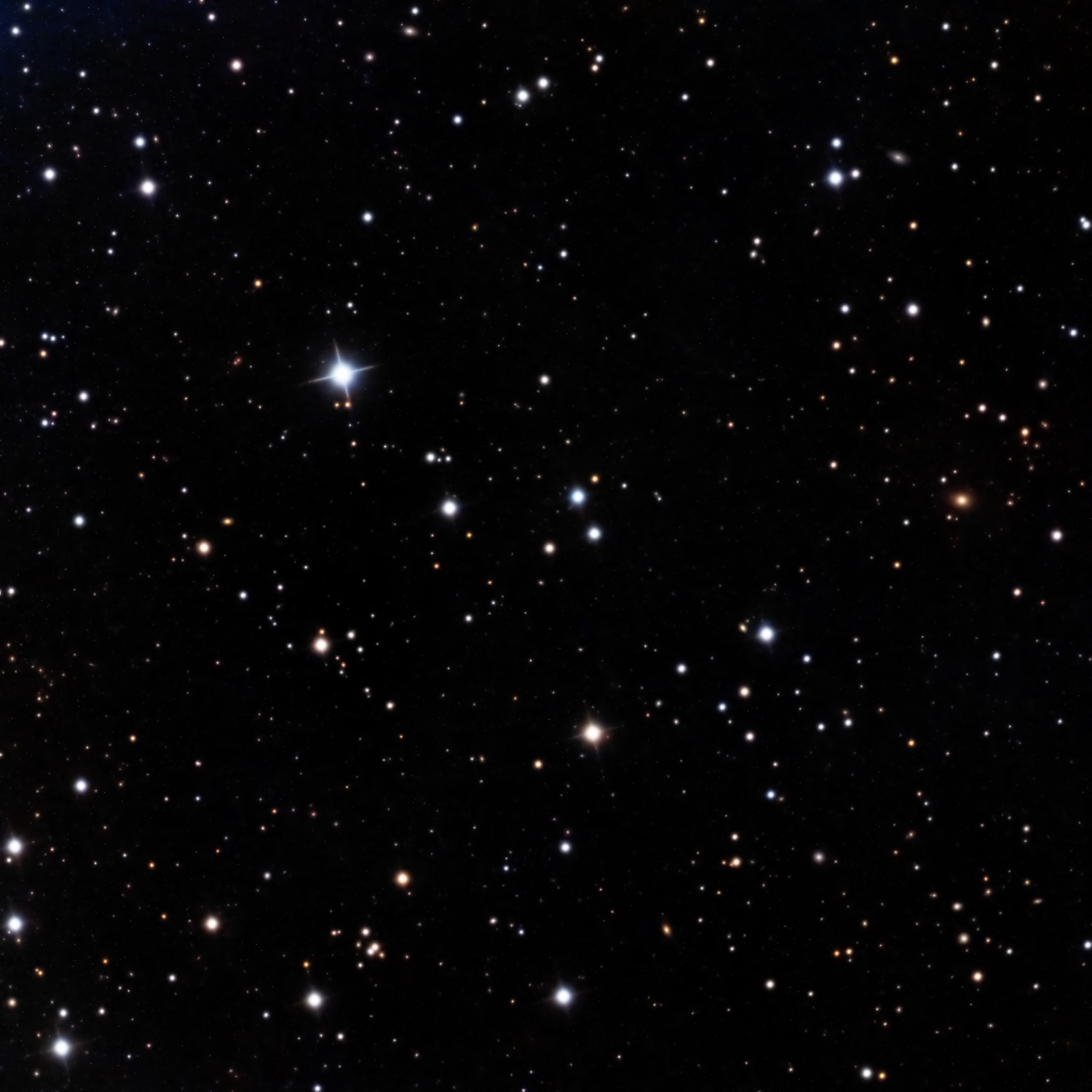Quasar 3C273

The image above appears to be an ordinary star field. Situated in the constellation Virgo it is just north of the celestial equator. There is however a very unusual object near the centre of the image: a quasar – in fact the first quasar ever visually identified.
What is a quasar? It is the nucleus of a very distant galaxy going through a period of intense activity, pouring out radiation in enormous quantities powered by a supermassive black hole.
The radiation we see does not come from the black hole itself – nothing can escape from inside a black hole’s event horizon – but rather from the matter falling towards it and heating up due to friction and gravitational acceleration. Hardly any of this matter falls directly into the black hole, but due to angular momentum an accretion disk forms and it is in this disk that the matter becomes extremely hot, before eventually spiralling inward past the event horizon.
The image below identifies the quasar, which looks like an unremarkable star.

However it is the core of a galaxy, and is incredibly luminous – typically a thousand times more luminous than a galaxy like the Milky Way – and this explains why we cannot see any spiral arms or other parts of its galaxy.
The radio emission from quasars was known in the late 1950s but it was not until 1963 that the first quasar – the one you see in the image – was identified visually. Because it looked star-like it was named a ‘quasi-stellar object’ or QSO, subsequently shortened to ‘quasar’. The designation 3C273 comes from its entry in the Third Cambridge Catalogue of radio sources. At magnitude 12.9 this is the brightest quasar in the sky.
It is thought that quasars represent an early stage in galaxy formation, when the supermassive black hole at the centre of many galaxies feeds on the gas and dust near the galactic nucleus. Once all this gas and dust are consumed, the quasar ‘shuts down’ and the galaxy takes on a more familiar appearance. The black hole at its core will however continue to consume matter as a gas cloud or star occasionally wander too close.
Quasars are incredibly distant, which means we are looking back in time when we see them. 3C273 has a redshift of 0.158, which means that the measured wavelengths of its spectral lines are increased by nearly 16%. Thus the familiar hydrogen-alpha line at 6563 Angstroms would be measured at 7600 Angstroms in this quasar’s spectrum. The same factor tells us that the universe has expanded by almost 16% since the light was emitted. Although the ‘lookback time’ depends on how the Hubble parameter has changed since the Big Bang, it is likely that we are seeing 3C273 as it was around 2 billion years ago.
As a footnote, accretion of matter by a black hole converts far more mass to energy – up to 30% – than does the nuclear fusion of hydrogen into helium in stars like the Sun, which only converts 0.7% of mass into energy.
Technical details:
Planewave CDK-14 corrected Dall-Kirkham reflector, FLI Proline P9000 cooled CCD camera and filter wheel with Astrodon LRGB filters. Total exposure times were 4 hours through each filter. Most processing carried out in PixInsight with a few final tweaks in Photoshop.


0 Comments